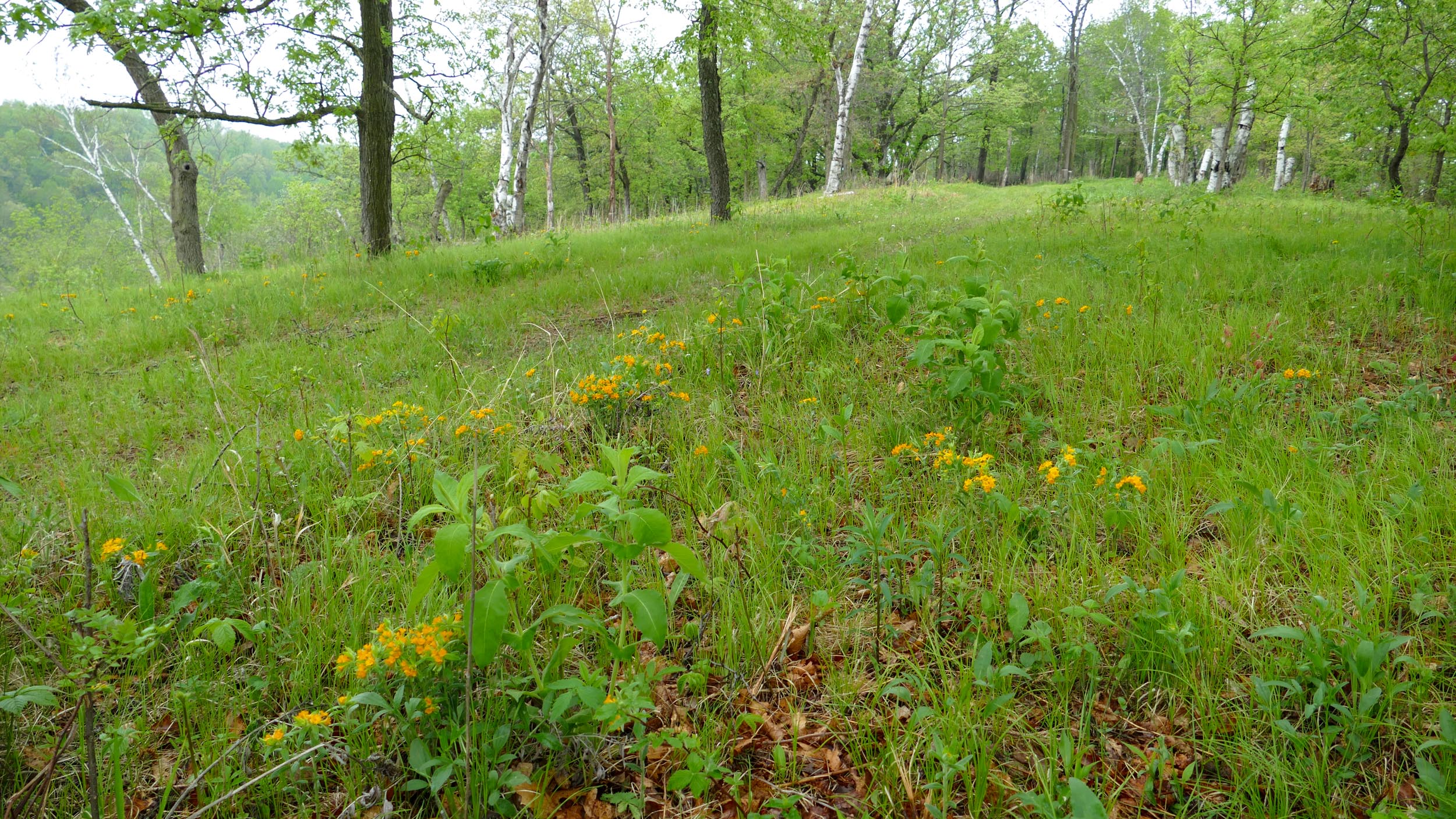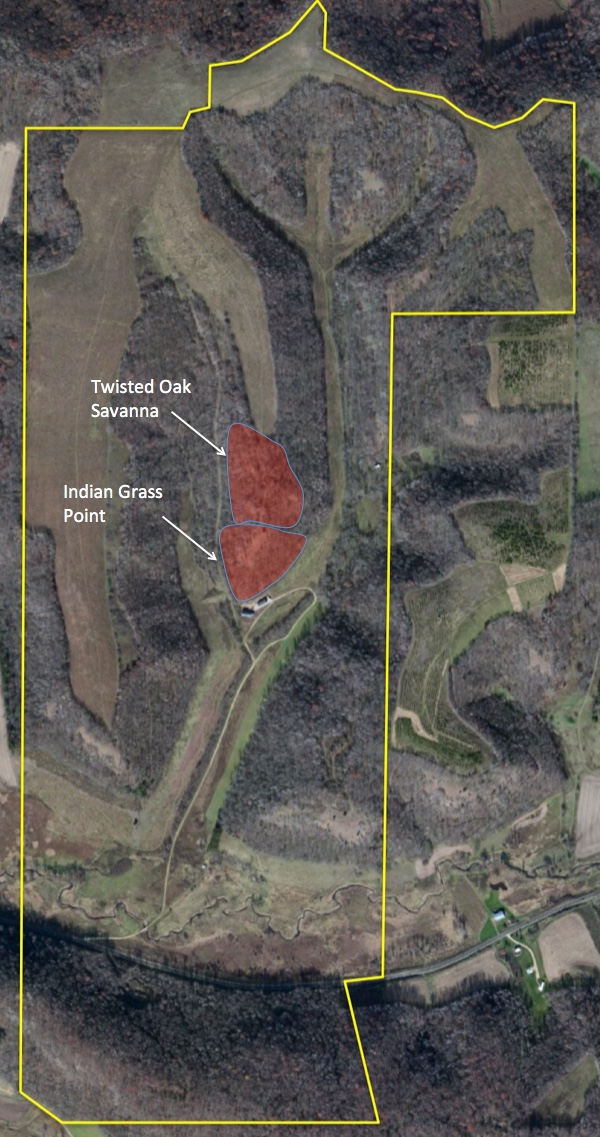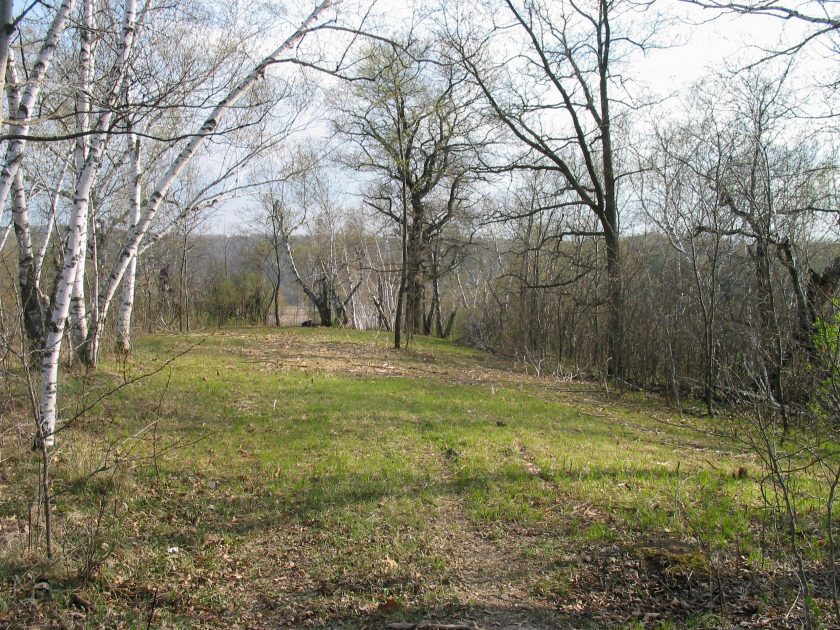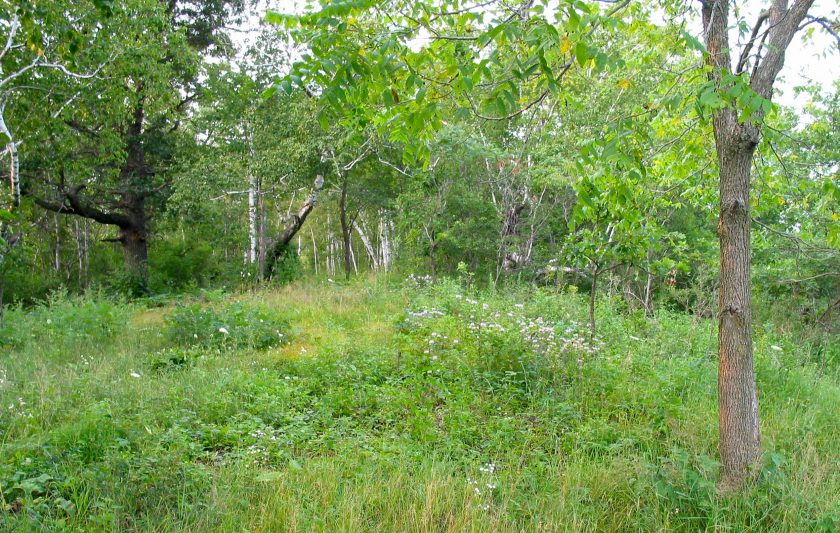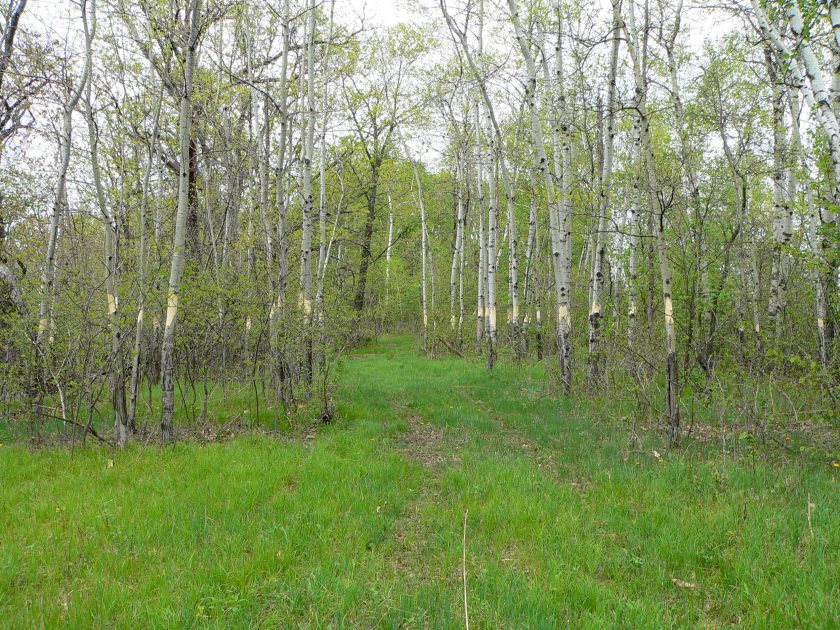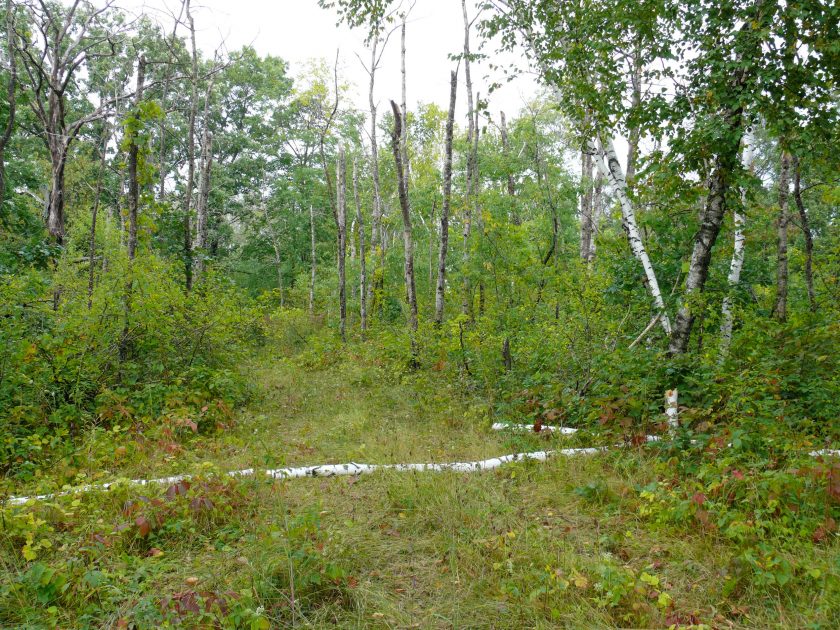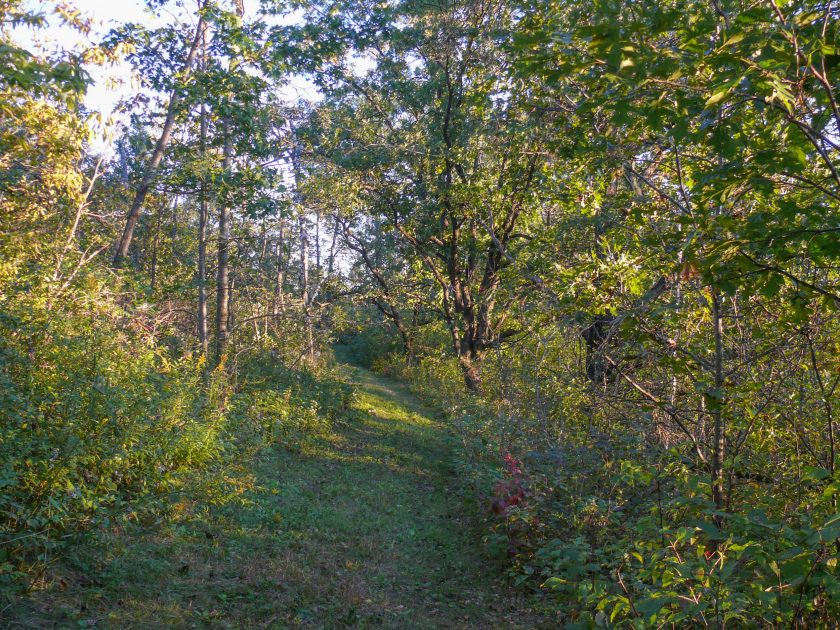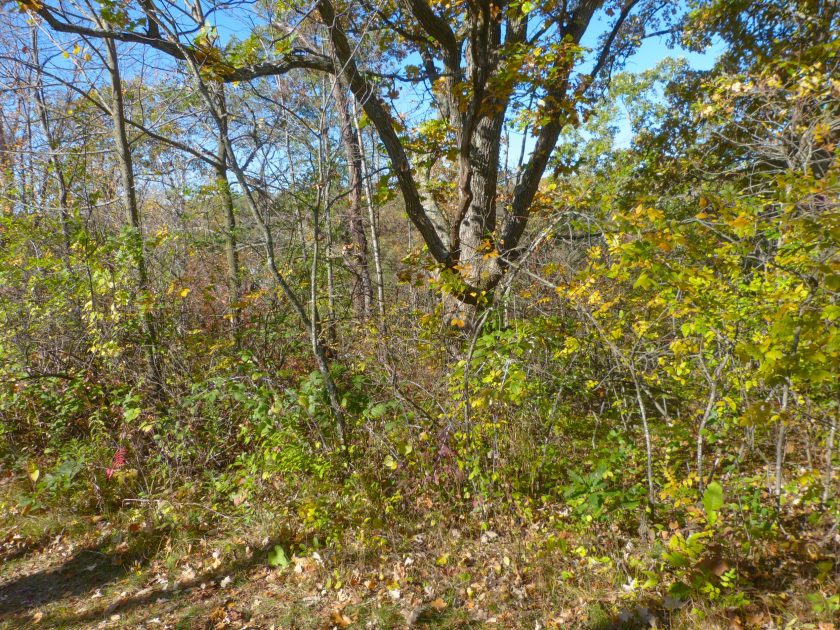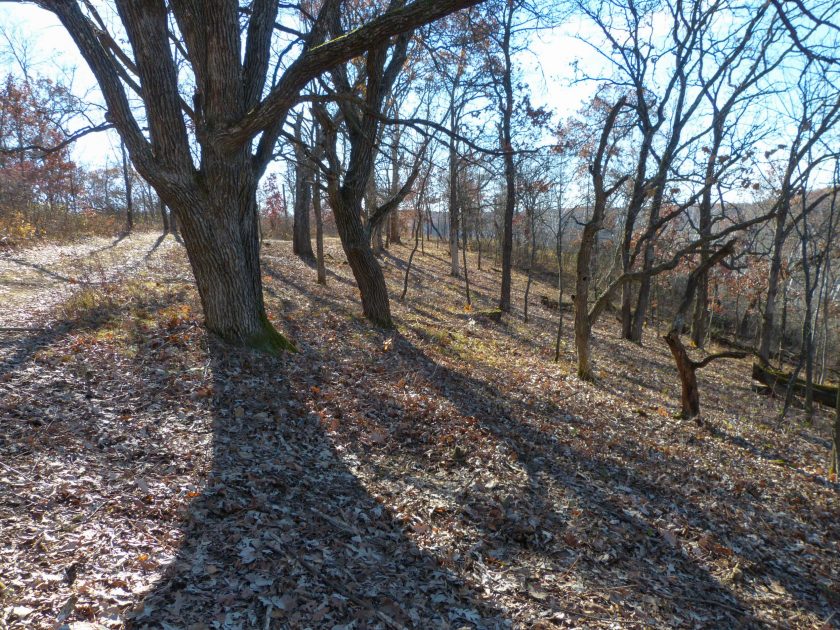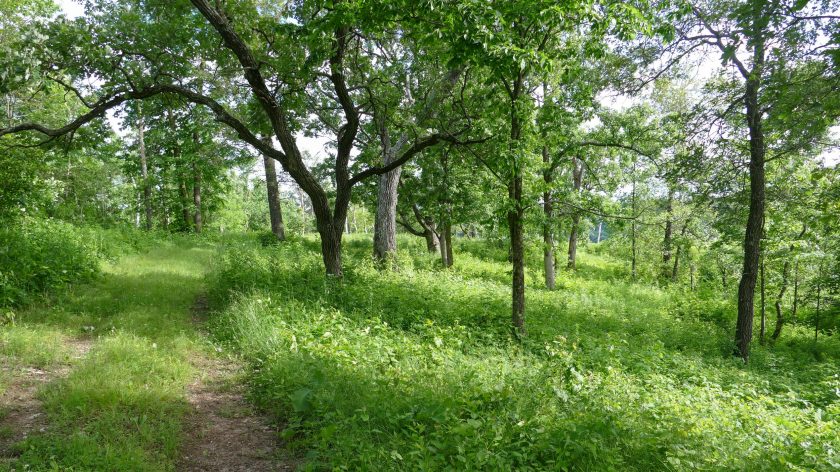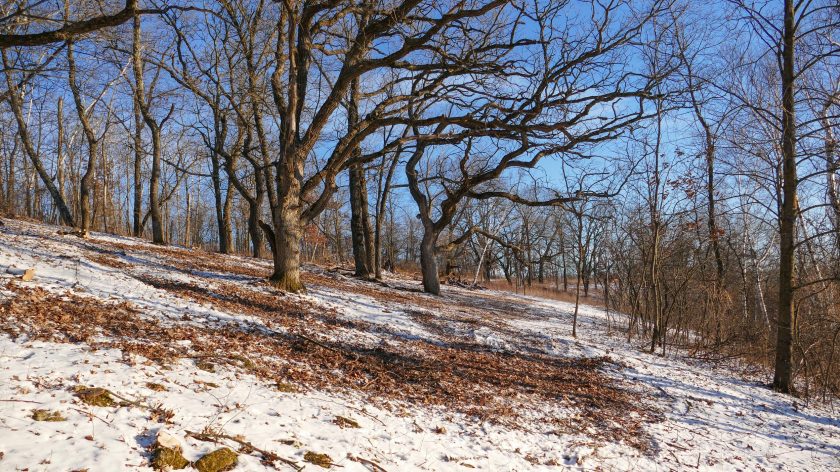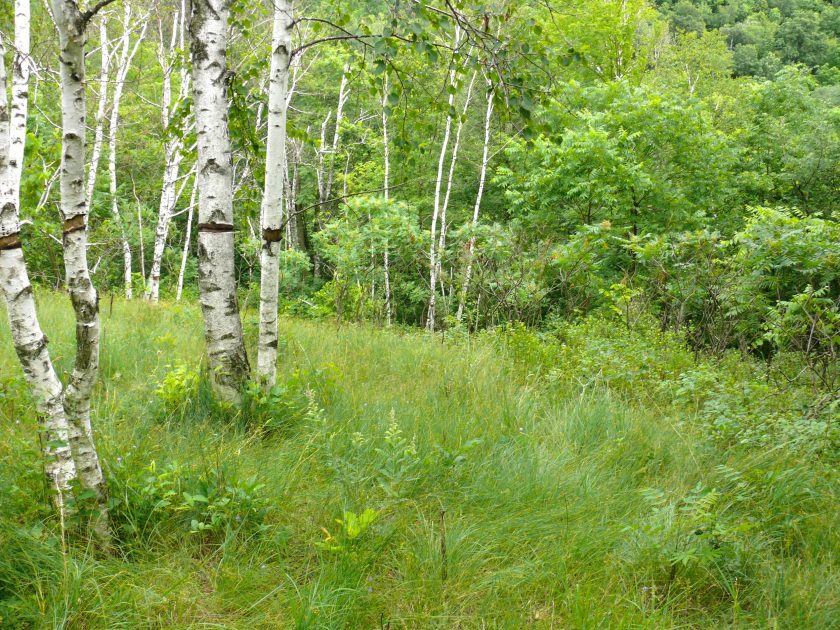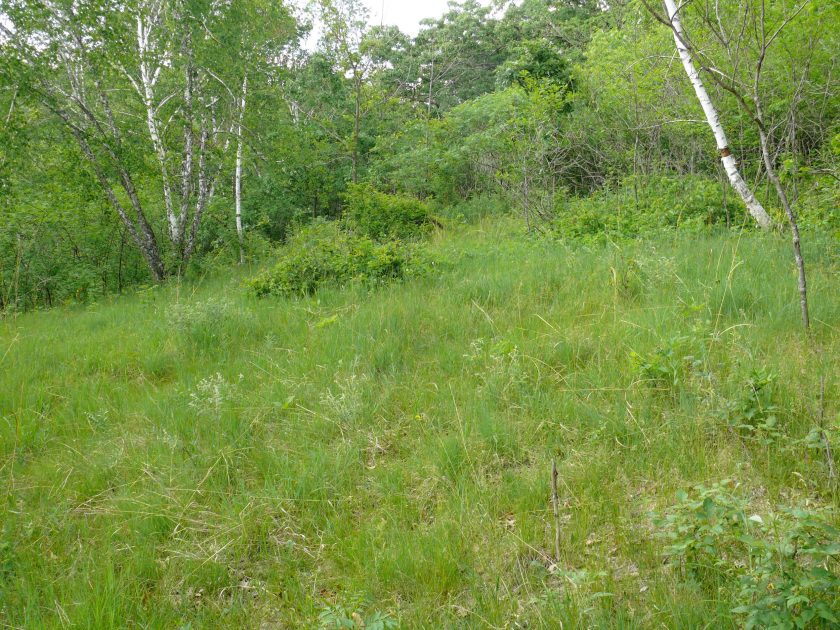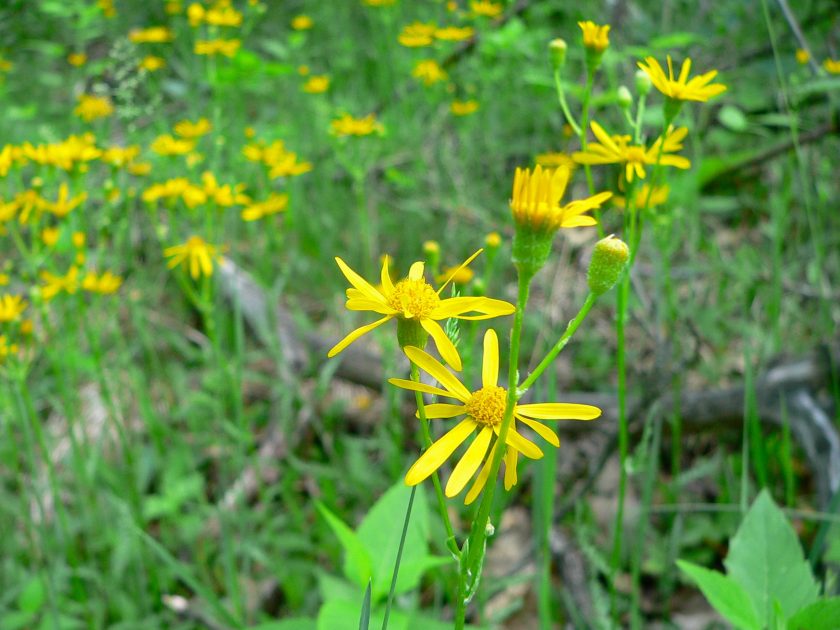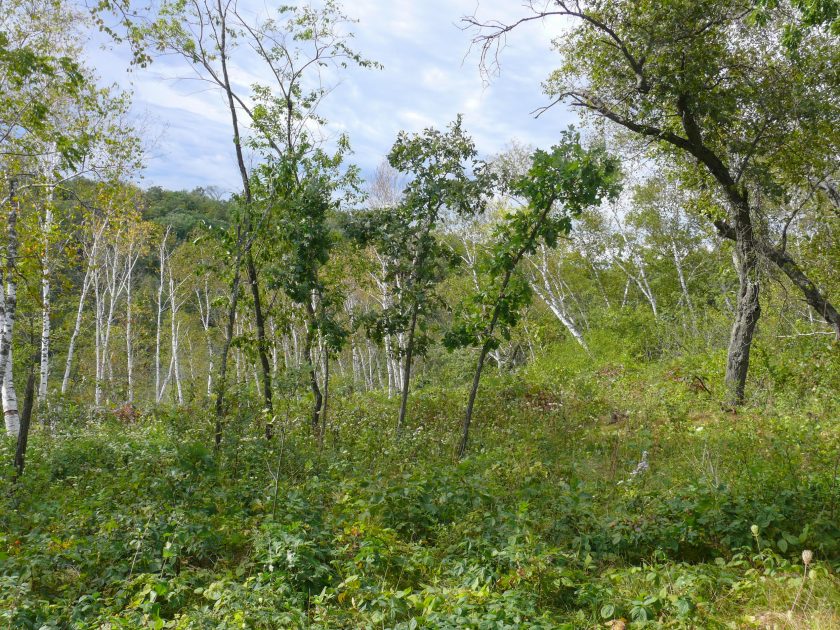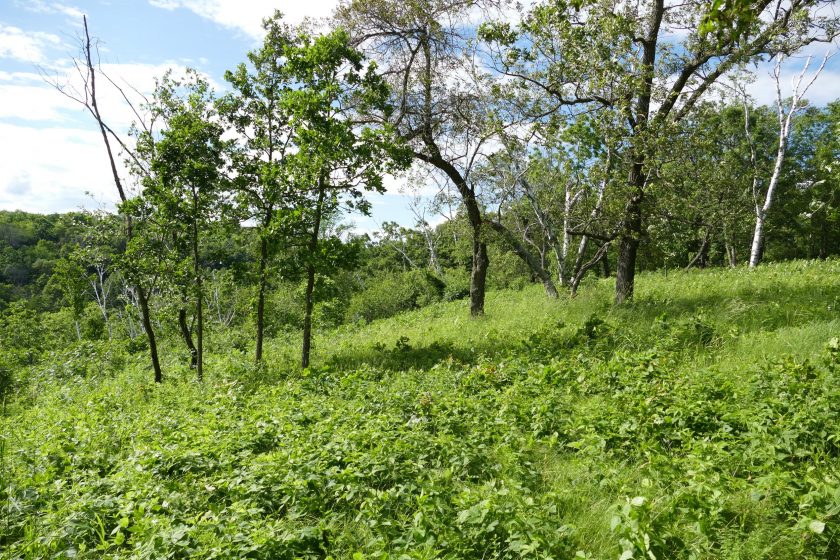When we bought our land in 2000, Twisted Oak Savanna was a large, overgrown savanna area behind the bluff prairie on Indian Grass Point. For a long time we included work we did there in the updates on Indian Grass Point. Finally, in 2017, the savanna area was big enough, and distinctive enough, that we decided it needed its own name. We’re also using that name to include some small prairie openings surrounded by the savanna: First Burn Prairie, Ragwort Opening, and several that have no names. (It’s not very clear where Indian Grass Point ends and Twisted Oak Savanna begins, so sometimes I put photos on both pages.)
Here’s one of the in-between places – close to where Indian Grass Point becomes Twisted Oak Savanna. The tree canopy is still quite open but there are more trees here than on the point, and one big, old Black Oak. (Photo from May 2021)
Here are photos and stories of how the savanna is changing by year:
2023, 2022, 2021, 2020, 2019, 2018, 2017, 2016, 2015, 2014, 2013, 2012, 2011, 2010, 2009, 2008, 2007, 2006, 2005, 2004, 2003
Here’s an aerial photo of Indian Grass Point and Twisted Oak Savanna. Indian Grass Point is the remnant prairie point itself, and the slopes down from the top that face south, east and west. Twisted Oak Savanna starts at the north end of the point where the trees start, and goes north to Buffalo Ridge Prairie.
I’ve gone back into our archive of photos and found as many old photos of the savanna as I can.
This is the earliest photo I found – in 2000 we had mowed a path through it to Indian Grass Point. In 2003 we widened the path so the mowed area covered a wider space on the flat top of the point.
4/27/2003
8/1/2004 This is looking from the point, back along the path, into the savanna. At that time it had grown into a very thick woods of aspen, birch, oak and black walnut.
5/16/2005 In 2005 I girdled the aspen trees.
9/11/2008 The aspens died, but we didn’t know what to do next, so we let them alone, and brush grew up around them.
9/12/2010 The path in from Buffalo Ridge Prairie to Indian Grass Point
10/13/2013 Finally, in 2013, we decided to tackle the brush. We picked this tree – a big, open-grown oak, to liberate.
11/10/2013 We had a great time, and we were so excited about the changes we were making that we kept going, and cleared a big area of savanna.
Since then we mow the savanna every spring, to discourage the brush from growing back. I also do more cutting and treating of stumps, when necessary, to control the brush. We’ve done more clearing, to enlarge the area and to connect it to the nearby prairie openings.
6/19/2017 The original cleared area; now that the savanna plants are growing back.
In 2017 we cleared another large section, working north along the mowed path, toward Buffalo Ridge Prairie.
12/7/2017 This is looking south through the newly cleared area, back into the older cleared savanna.
Twisted Oak Savanna includes at least four small prairie openings, all of which are surrounded by the savanna.
7/18/2009 On the east-facing slope, overlooking 3 Finger Valley, is a small opening that we call First Burn Prairie – because we tried doing our first very tiny burn there.
On top of the point, along the path to Buffalo Ridge, is Ragwort Opening – a slightly larger opening with an open area with prairie grasses, Western Sunflower, Leadplant, Whorled Milkweed, and Butterflyweed, and with Balsam Ragwort growing under a grove of young Burr Oaks.
6/14/2009 Ragwort Opening
6/4/2007 Balsam Ragwort in Ragwort Opening
Western Opening is the largest of the prairie openings – it’s on the west-facing slope. Birches are growing into it from below, and honeysuckle and prickly ash are invading.
9/10/2010 Western Opening before girdling the birches, and before we did any work on brush clearing.
6/19/2017 Western Opening – most of the birches have died, but there’s a lot more brush clearing to be done.
The last opening is one we discovered in the fall of 2017 – just as we got to the north end of our clearing work for that year. It’s very overgrown with birches and large sumacs, and we haven’t given it a name yet. But it’s on a steep west-facing slope, and has prairie flowers and grasses under the trees.
11/25/2017 The entrance to the prairie opening

